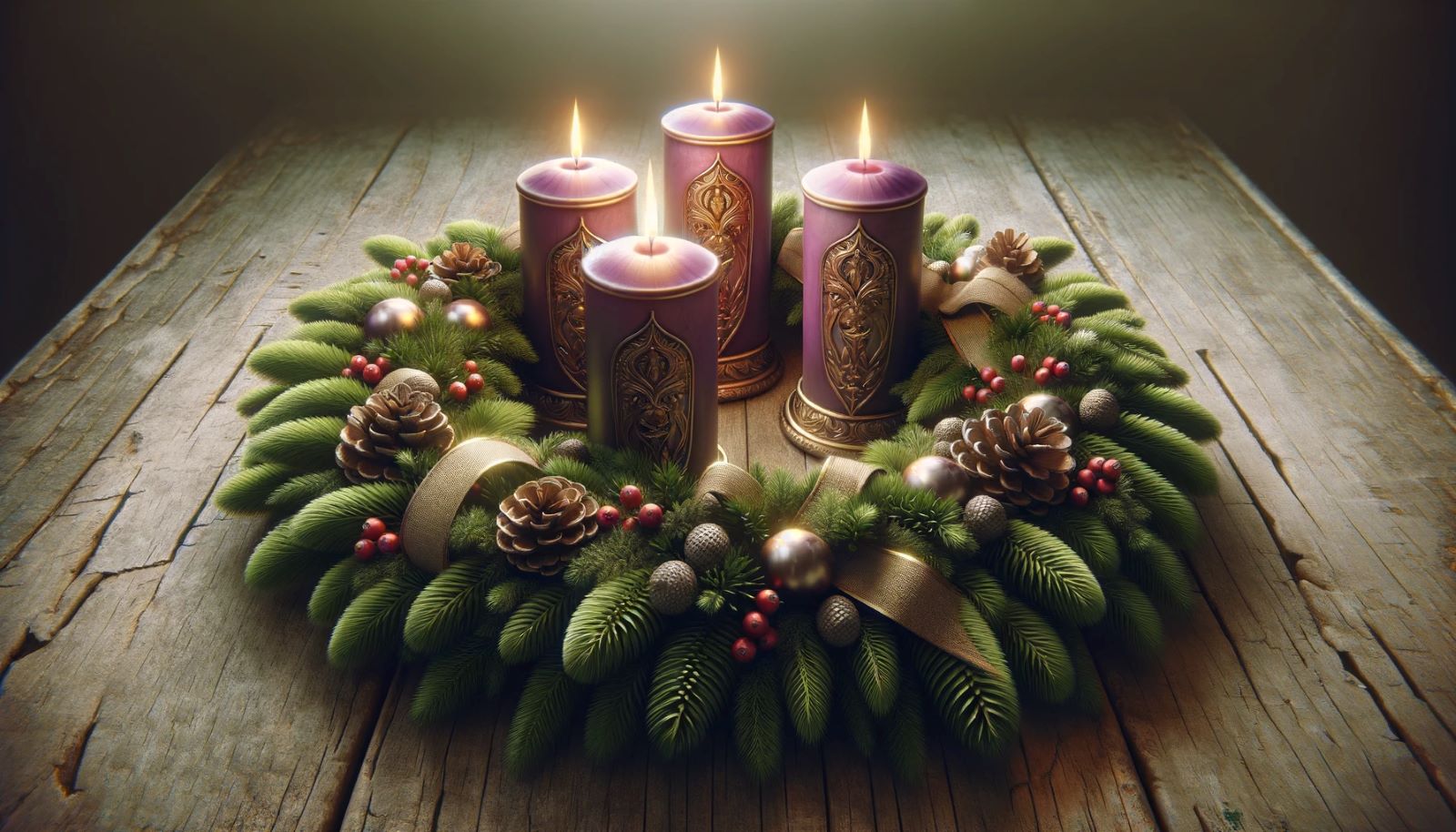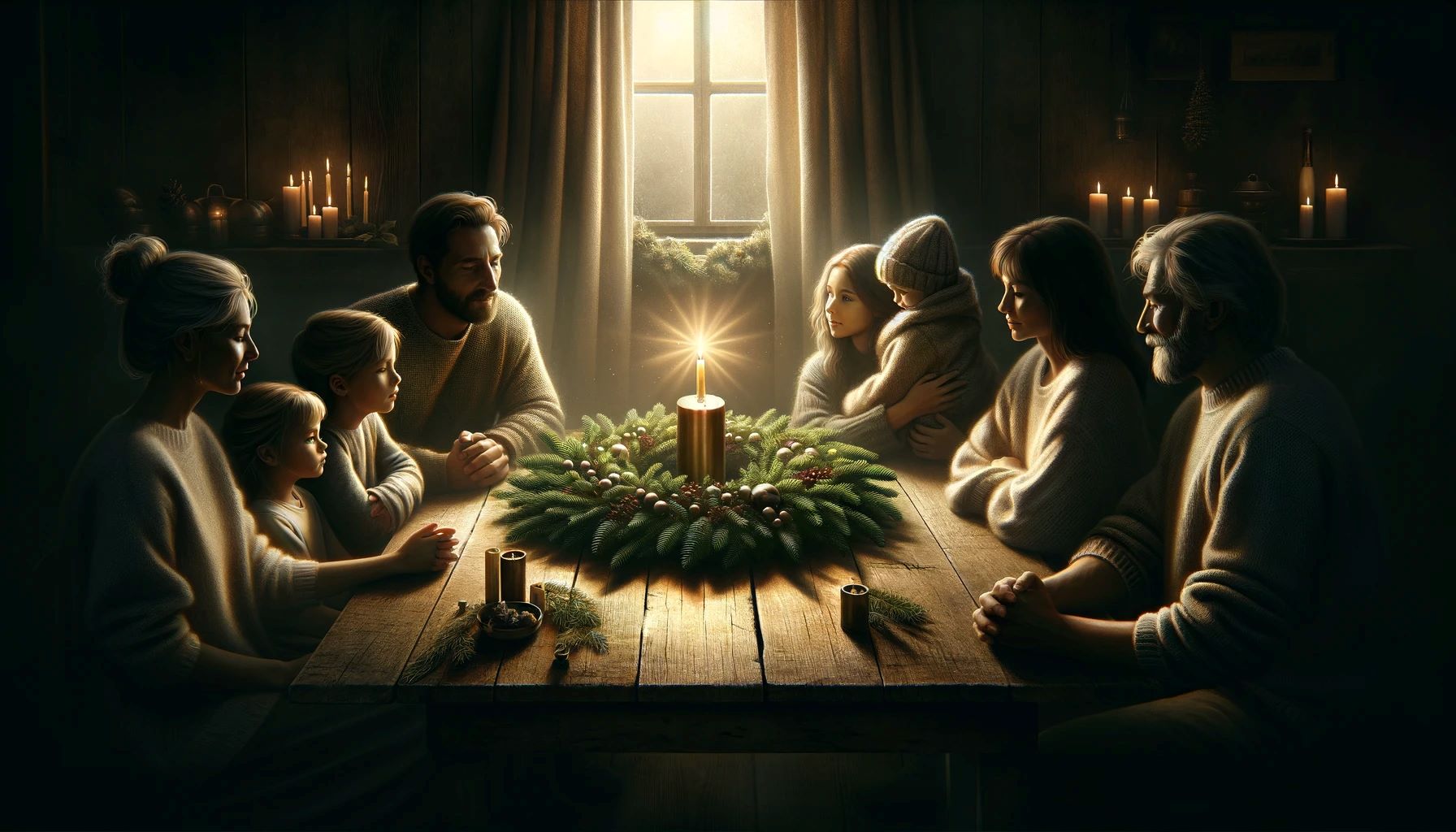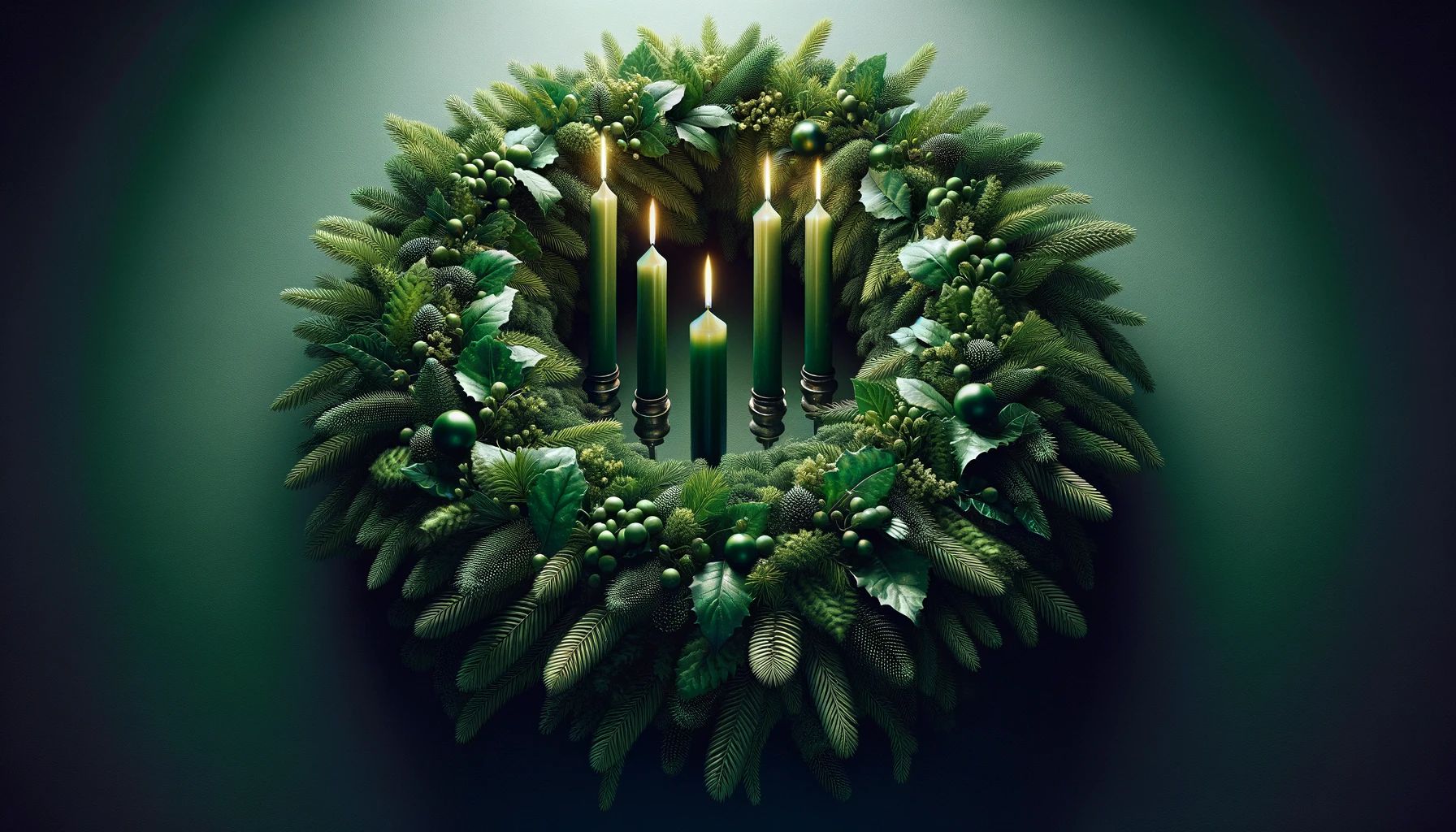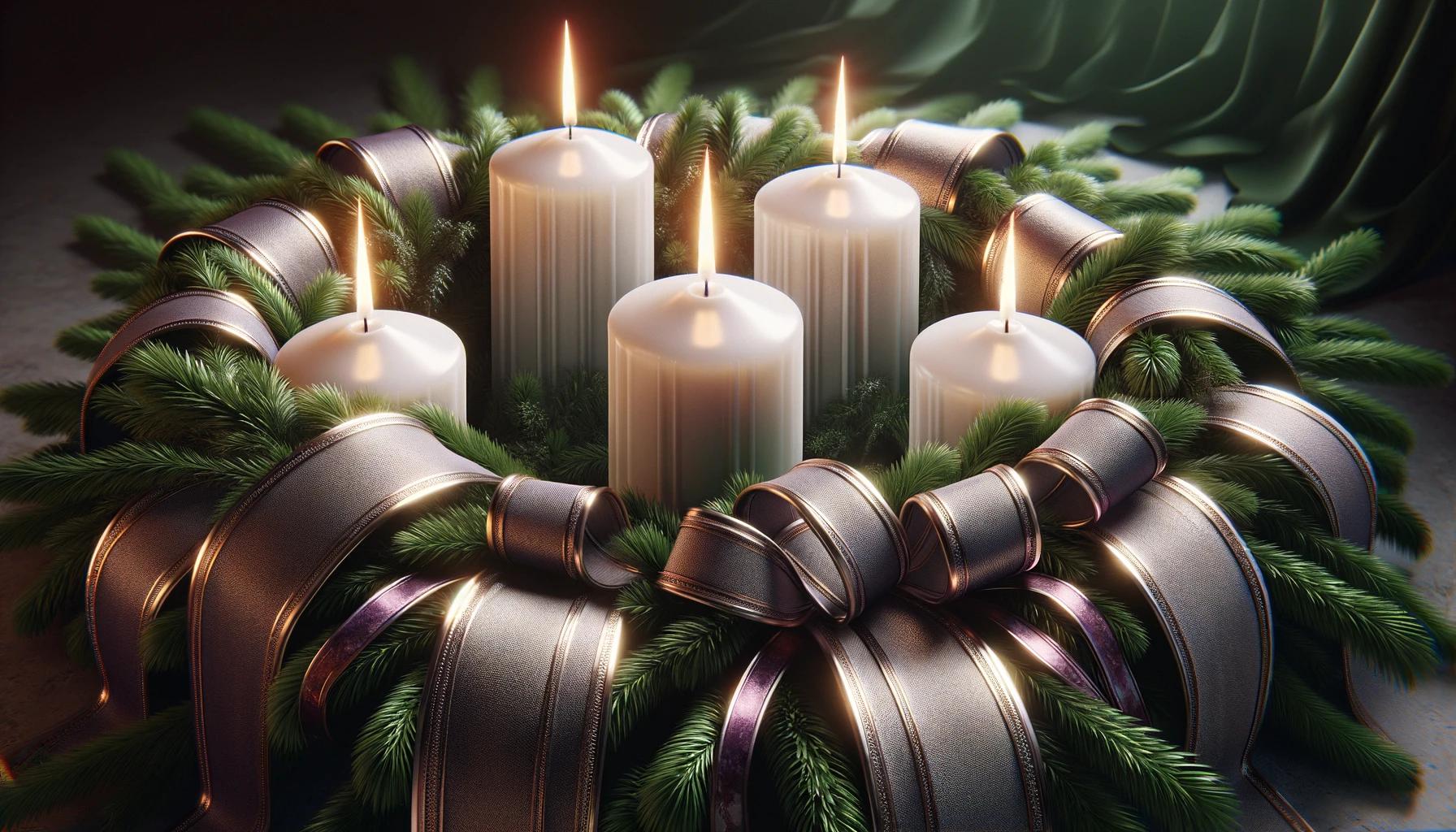Home>Special Themes>Why Is Purple Used In Advent
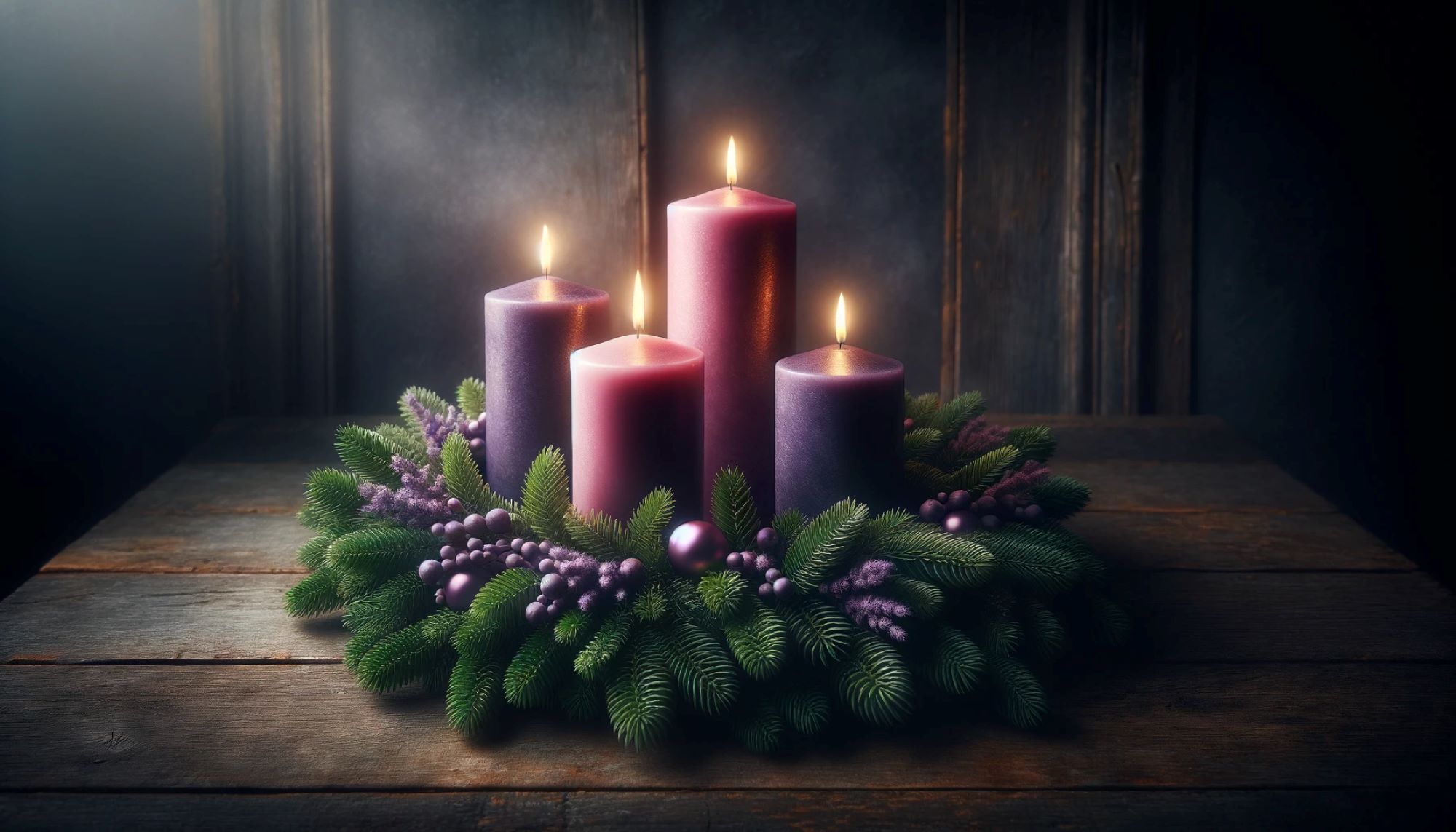

Special Themes
Why Is Purple Used In Advent
Published: February 12, 2024
Peter Smith, Editorial Director at Christian.net, combines deep insights into faith, politics, and culture to lead content creation that resonates widely. Awarded for his contributions to religious discourse, he previously headed a major organization for religious communicators, enhancing dialogue on faith's societal impacts.
Discover the significance of purple in Advent and its special themes. Uncover the reasons behind the use of this color in the Advent season. Explore the spiritual and historical meanings of purple in Advent.
(Many of the links in this article redirect to a specific reviewed product. Your purchase of these products through affiliate links helps to generate commission for Christian.net, at no extra cost. Learn more)
Table of Contents
Introduction
Purple holds a special place in the hearts of many during the Advent season. As we delve into the significance of this regal hue, we uncover a rich tapestry of symbolism, tradition, and historical importance. From its deep roots in Christianity to its modern interpretations, the color purple evokes a sense of reverence and anticipation during the weeks leading up to Christmas.
In this article, we will explore the multifaceted role of purple in Advent, shedding light on its symbolic meaning, historical context, and contemporary relevance. By delving into the use of purple in Advent traditions and its profound significance, we aim to unravel the timeless allure of this majestic color and its enduring impact on the Advent season. Join us on this enlightening journey as we uncover the captivating story behind the use of purple in Advent.
Read more: Why Pink And Purple Candles At Advent
The Symbolism of Purple in Christianity
In Christianity, the color purple holds profound symbolism, representing a sense of penitence, preparation, and royalty. This rich hue is deeply intertwined with the spiritual significance of the Advent season, serving as a visual reminder of the solemnity and anticipation that characterize this period of spiritual reflection.
The use of purple traces its roots to ancient traditions, where it was associated with royalty and nobility. In the context of Christianity, purple is emblematic of the sovereignty of Christ, signifying his kingship and dominion. This symbolism is particularly poignant during Advent, as believers prepare to celebrate the birth of Jesus, the long-awaited Messiah and the ultimate embodiment of divine royalty.
Furthermore, purple is also closely linked to the theme of penitence and preparation. As a liturgical color, it is often employed during the season of Advent to evoke a sense of introspection and spiritual readiness. The somber yet majestic presence of purple serves as a visual call to contemplation, prompting believers to reflect on their faith, seek reconciliation, and prepare their hearts to welcome the arrival of Christ.
Moreover, the use of purple in Christianity is steeped in the tradition of Advent, where it symbolizes the dual nature of the season. On one hand, it signifies a period of solemn reflection and repentance, urging believers to acknowledge their spiritual yearning for redemption. On the other hand, it conveys a sense of joyful anticipation, as the vibrant undertones of purple hint at the imminent arrival of the long-awaited Savior.
In essence, the symbolism of purple in Christianity during the Advent season encapsulates a profound duality – the juxtaposition of solemnity and exultation, penitence and anticipation. It serves as a visual testament to the multifaceted nature of faith, inviting believers to embrace the depth of spiritual introspection while eagerly anticipating the fulfillment of divine promises.
As we unravel the symbolism of purple in Christianity, we gain a deeper appreciation for its multifaceted significance, which transcends mere aesthetics and delves into the very essence of the Advent journey. This regal hue, with its rich symbolism and historical resonance, continues to enrich the spiritual tapestry of the Advent season, offering a timeless reminder of the profound truths and promises embedded in the Christian faith.
The Use of Purple in Advent Traditions
The use of purple in Advent traditions is a time-honored practice that adds depth and significance to the observance of this sacred season. In the context of Advent, purple serves as a visual thread that weaves together the themes of anticipation, penitence, and spiritual preparation. This majestic hue adorns churches, homes, and sacred spaces, infusing the atmosphere with a sense of reverence and expectation.
One of the most prominent manifestations of purple in Advent traditions is the liturgical employment of this regal color. Within the Christian liturgical calendar, purple is designated as the color of Advent, symbolizing the solemn yet hopeful nature of this season. This tradition dates back centuries, reflecting the enduring significance of purple as a visual marker of the Advent journey.
In churches and religious communities, the use of purple extends beyond mere decoration; it permeates the very fabric of Advent observance. From the liturgical vestments worn by clergy to the adornment of altars and sacred vessels, the presence of purple serves as a poignant reminder of the spiritual themes that define Advent. The deliberate choice of this color underscores the solemnity of the season, prompting believers to engage in introspection, prayer, and contemplation as they prepare for the celebration of Christ's birth.
Moreover, the use of purple in Advent traditions extends to the lighting of Advent candles. The Advent wreath, adorned with purple candles, stands as a cherished symbol of the season, each candle representing a specific aspect of the Advent journey. As the weeks progress, the lighting of these purple candles serves as a visual countdown to the joyous culmination of Christmas, evoking a sense of eager anticipation and spiritual readiness.
Beyond the confines of religious spaces, the use of purple in Advent traditions extends to the adornment of homes and personal devotional practices. Many families incorporate purple elements into their Advent decorations, infusing their living spaces with the rich symbolism of this color. From purple candles and ornaments to symbolic representations of royalty and anticipation, the presence of purple serves as a tangible link to the broader tradition of Advent observance.
In essence, the use of purple in Advent traditions transcends mere aesthetics; it embodies the very essence of the season, encapsulating the profound themes of hope, preparation, and spiritual longing. This enduring tradition, with its rich symbolism and historical resonance, continues to enrich the Advent journey, inviting believers to immerse themselves in the timeless significance of this sacred season.
Historical Significance of Purple in Advent
The historical significance of purple in Advent traces its origins to ancient traditions and cultural practices that have woven a rich tapestry of symbolism and meaning around this regal hue. In the context of Advent, the historical resonance of purple can be traced back to its association with royalty, nobility, and spiritual solemnity.
Dating back to the early centuries of Christianity, the use of purple as a liturgical color during the Advent season reflects its deep-rooted historical significance. In the ancient world, purple was a rare and precious dye, extracted from the glands of mollusks found in the eastern Mediterranean. This labor-intensive process rendered purple fabric a symbol of wealth, status, and prestige, often reserved for royalty and high-ranking officials. The historical allure of purple as a mark of nobility and authority imbued it with a sense of reverence and significance, making it a fitting choice for the sacred observance of Advent.
Furthermore, the historical significance of purple in Advent is intertwined with the broader cultural and religious contexts of the time. In the early Christian era, the use of purple as a liturgical color during Advent served as a visual link to the themes of penitence, preparation, and anticipation that defined this season. The deliberate choice of this majestic hue underscored the solemnity and spiritual gravity of Advent, inviting believers to engage in introspection and spiritual readiness as they awaited the celebration of Christ's birth.
Moreover, the historical significance of purple in Advent is closely tied to the enduring symbolism of royalty and sovereignty within the Christian faith. As believers prepared to commemorate the arrival of the long-awaited Messiah, the use of purple served as a poignant reminder of Christ's kingly authority and divine dominion. This historical resonance of purple as a symbol of Christ's sovereignty added a layer of profound significance to the Advent season, infusing it with a sense of reverence and anticipation.
In essence, the historical significance of purple in Advent reflects a convergence of ancient traditions, cultural symbolism, and religious reverence. This regal hue, with its deep historical roots and enduring allure, continues to enrich the Advent season, offering a timeless reminder of the profound spiritual truths and historical resonance embedded in this sacred observance.
Modern Interpretations of Purple in Advent
In contemporary times, the use of purple in Advent has evolved to encompass a myriad of modern interpretations, reflecting the dynamic interplay between tradition, symbolism, and cultural relevance. As society undergoes cultural shifts and embraces diverse expressions of faith, the role of purple in Advent has adapted to resonate with the contemporary ethos while retaining its timeless significance.
One modern interpretation of purple in Advent revolves around its inclusive symbolism. In an increasingly diverse and multicultural world, the color purple serves as a unifying symbol that transcends cultural and religious boundaries. Its universal appeal as a color of royalty, spirituality, and anticipation resonates with people from various backgrounds, fostering a sense of collective reverence and anticipation during the Advent season.
Furthermore, the modern interpretation of purple in Advent extends to its resonance with contemporary spiritual themes. As individuals navigate the complexities of modern life, the symbolism of purple as a color of introspection, hope, and spiritual preparation holds profound relevance. In a fast-paced world marked by constant distractions, the use of purple in Advent serves as a visual anchor, prompting believers to pause, reflect, and engage in a deeper spiritual journey as they anticipate the celebration of Christmas.
Moreover, the modern interpretation of purple in Advent encompasses its adaptability to diverse forms of expression. In an era marked by artistic innovation and creative exploration, the use of purple in Advent has transcended traditional boundaries, finding expression in a myriad of art forms, installations, and multimedia presentations. This dynamic reinterpretation of purple as a symbol of Advent underscores its enduring relevance in contemporary creative expressions, offering a platform for artists and creators to infuse the season with fresh perspectives and interpretations.
In essence, the modern interpretations of purple in Advent reflect a harmonious blend of tradition and contemporary relevance. As the Advent season continues to unfold in the modern world, the symbolism of purple serves as a timeless thread that connects the past, present, and future, inviting believers to embark on a profound spiritual journey marked by anticipation, introspection, and the enduring promise of hope.
Read more: What Does The Purple Of Advent Mean
Conclusion
In conclusion, the use of purple in Advent transcends mere aesthetics, embodying a profound tapestry of symbolism, tradition, and historical resonance. From its deep roots in Christianity to its modern interpretations, the color purple serves as a visual testament to the enduring themes of anticipation, penitence, and spiritual preparation that define the Advent season.
The symbolism of purple in Christianity during the Advent season encapsulates a profound duality – the juxtaposition of solemnity and exultation, penitence and anticipation. It serves as a visual testament to the multifaceted nature of faith, inviting believers to embrace the depth of spiritual introspection while eagerly anticipating the fulfillment of divine promises.
The historical significance of purple in Advent reflects a convergence of ancient traditions, cultural symbolism, and religious reverence. This regal hue, with its deep historical roots and enduring allure, continues to enrich the Advent season, offering a timeless reminder of the profound spiritual truths and historical resonance embedded in this sacred observance.
In contemporary times, the role of purple in Advent has evolved to encompass a myriad of modern interpretations, reflecting the dynamic interplay between tradition, symbolism, and cultural relevance. Its inclusive symbolism, resonance with contemporary spiritual themes, and adaptability to diverse forms of expression underscore its enduring relevance in the modern world.
As we reflect on the multifaceted significance of purple in Advent, we are reminded of its timeless allure and enduring impact on the Advent season. This regal hue, with its rich symbolism and historical resonance, continues to enrich the spiritual tapestry of the Advent season, offering a timeless reminder of the profound truths and promises embedded in the Christian faith.

